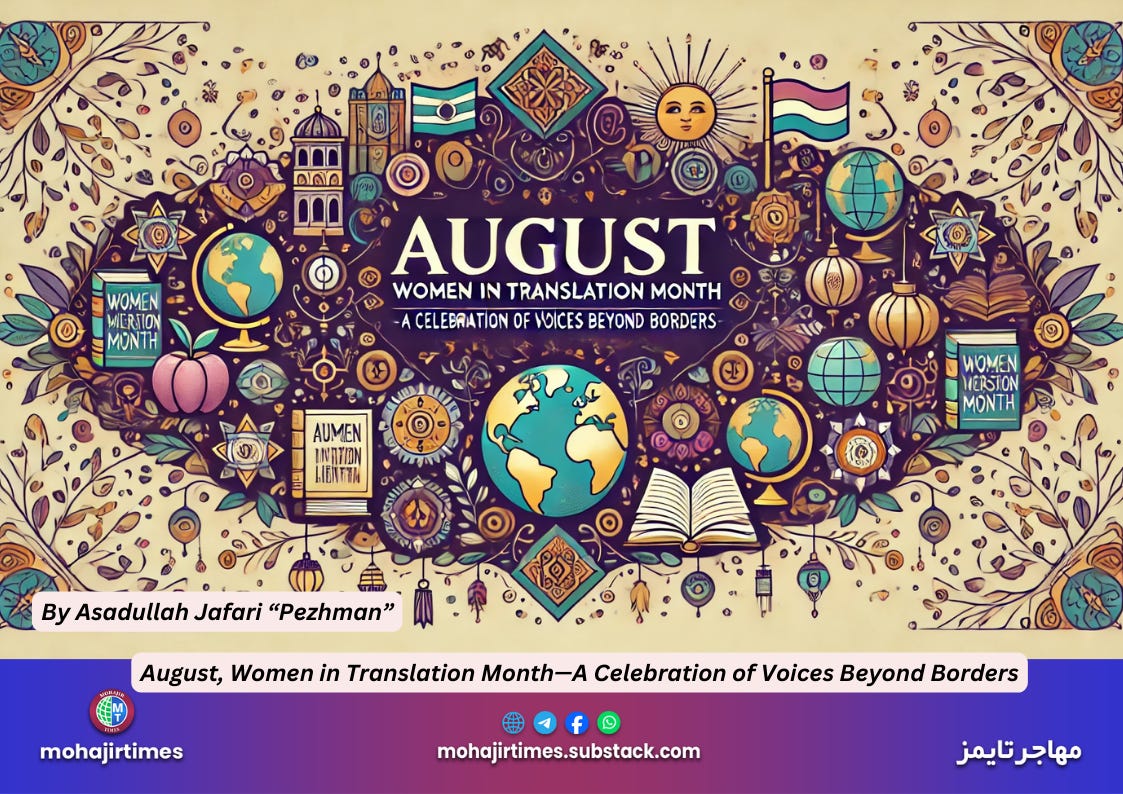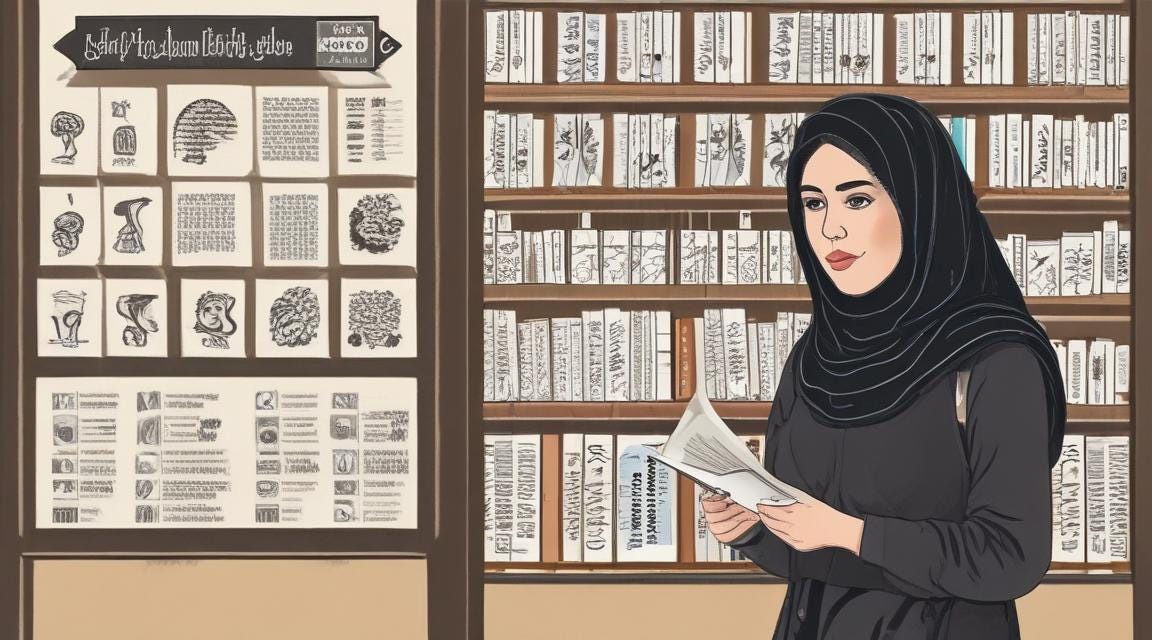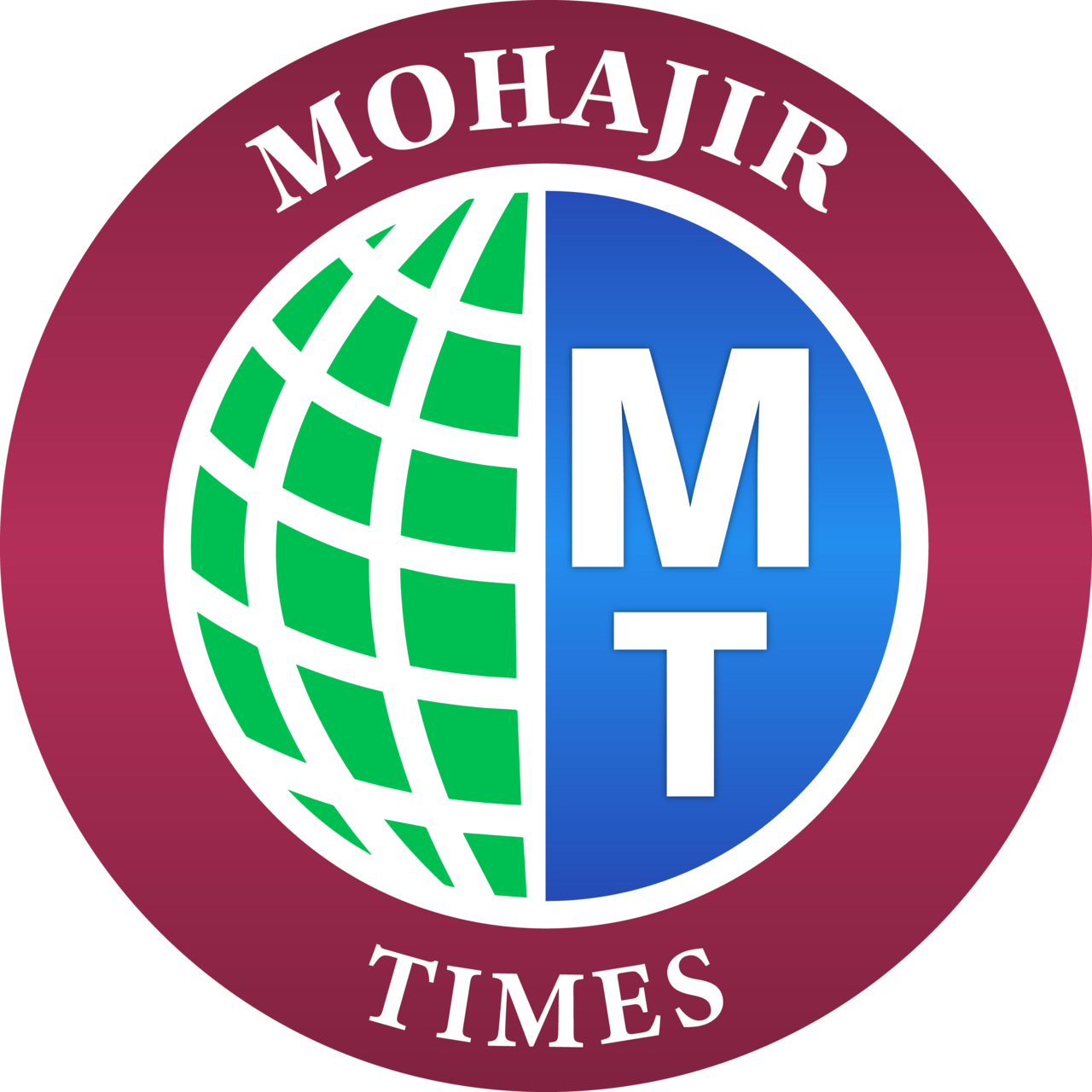August, Women in Translation Month—A Celebration of Voices Beyond Borders
These translations are translated and produced with weak and low-quality literature because there is still no special major in translation literature, even in Afghanistan universities and colleges
Introduction
August is celebrated worldwide as Women in Translation Month (WITMonth). Women in Translation Month is an annual celebration held every August, a time dedicated to recognizing the contributions of women writers and translators in the global literary landscape. Despite the literary world’s progress towards inclusivity, women writers and translators are still significantly underrepresented, especially those writing in languages other than English.
This month-long celebration sheds light on the disparities within literary translation, promoting the work of women writers and translators while encouraging readers to explore diverse voices beyond borders. In this essay, we can better understand the significance of Women in Translation Month by examining the history, motivation, cultural and linguistic parallels, and notable figures in the field.
History
Women in Translation Month was initiated in 2014 by book blogger Meytal Radzinski after she noticed the overwhelming underrepresentation of women writers and translators in translated literature. According to various studies, only about 30% of books translated into English were written or translated by women. This imbalance highlighted the systemic gender biases that permeate the publishing industry, affecting not just what is translated, but who gets translated.
Radzinski’s initiative aimed to raise awareness of this disparity and encourage publishers, translators, writers, and readers alike to support and seek out works by women worldwide. Over the years, Women in Translation Month has grown into a global movement, with readers, publishers, and literary organizations participating through events, reading challenges, and social media campaigns (Banerjee, 2020).
Motivation
The primary motivation behind Women in Translation Month is to address the gender imbalance in translated literature and to give voice to women who have been historically marginalized. The movement seeks to diversify the literary landscape by focusing on women writers and translators, offering readers access to a broader range of experiences, perspectives, and cultures in translation literature. This effort is not just about increasing the number of women writers being translated but also about challenging the often male-dominated narratives that have shaped the understanding of world literature by translating. Women in Translation Month is an advocacy for literary equity, cultural diversity, and the acknowledgment of women’s critical role in the global exchange of ideas (Radzinski, 2014).
Cultural and Linguistic Parallels
Women in Translation Month highlights the cultural and linguistic parallels across the globe, as it brings together voices from diverse backgrounds, each with unique stories to tell. Women’s experiences, though shaped by different cultures, often resonate on a universal level, exploring themes of identity, struggle, resilience, and empowerment. This initiative fosters cross-cultural understanding by encouraging readers to explore literature from non-Western and non-European languages like Farsi/Dari and Pashto in Afghanistan, Farsi in Iran, and Tajikistani-Persian in Tajikistan and also the other countries where such languages are common and, and lesser-known cultures, thereby breaking down linguistic barriers and broadening the scope of accessible narratives.
Linguistic diversity plays a crucial role in this movement. Each language carries a unique way of seeing the world, and women’s writing often reflects nuanced perspectives on life, relationships, and society that may not be captured in male-dominated literary traditions. Translating these works not only preserves these linguistic nuances but also celebrates the rich tapestry of human expression that transcends borders.
Narratives of Women Through Translation
Through translation, women’s narratives often bring to light stories that would otherwise remain hidden. Female writers and translators frequently explore themes such as gender inequality, personal freedom, family dynamics, and social justice, providing readers with insights into women's lives in different cultures beyond borders around the globe. Such translations enable these stories to reach a wider audience, amplifying voices that challenge societal norms and question patriarchal structures.
For example, the works of writers like Ms. Clarice Lispector from Brazil, whose deeply introspective and existential writing provides a window into the female psyche, or Ms. Han Kang from South Korea, whose novels explore the human condition through the lens of personal and societal trauma, have gained international recognition through translation. These narratives enrich the global literary canon, offering fresh perspectives and fostering empathy and understanding among readers’ societies worldwide.
World-Famous Female Translators
The contributions of women translators to the literary world are immense, with many playing pivotal roles in making international literature accessible to wider audiences. One notable figure is Ms. Edith Grossman, renowned for her translations of Latin American literature, including works by Gabriel García Márquez and Mario Vargas Llosa (Grossman, 2010). Grossman’s skillful translations have brought Latin American literature's magical realism and political complexities to English-speaking readers, earning her a place among the most respected translators in the field. Other prominent translators are Anthea Bell, whose translations of German literature, including works by W.G. Sebald and Stefan Zweig, are celebrated for their elegance and fidelity to the original texts, and also Ms. Maureen Freely, known for her translations of Nobel laureate Orhan Pamuk’s novels from Turkish and so on.
So, these translators, among many others, demonstrate the critical role of women in preserving and promoting world literature through translation. Their meticulous and sensitive translations have not only brought critical acclaim to these authors but have also elevated the art of translation, emphasizing the translator’s role as a creative force in their own right.
Comparison of Translation by Women in Iran and Afghanistan
The literary translation landscapes of Iran and Afghanistan, while sharing linguistic and cultural ties, also reflect distinct historical and social contexts that influence the role of women in translation. In Iran, the tradition of literature and translation is deeply rooted, with Persian being a prominent language of cultural expression (Milani, 2011). Iranian women have made significant contributions to both literature and translation, often using their work to critique societal norms and advocate for gender equality (Kar, 2007). However, the translation landscape in Afghanistan has been shaped by decades of conflict and instability, which have impacted the accessibility and promotion of literature, particularly by women.
In Iran, female translators have had more opportunities to engage with a broader array of literary works in translation, both domestic and international, owing to the country’s relatively robust publishing industry. This has allowed Iranian female translators to gain recognition and influence within translation literature circles. In contrast, Afghan women translators often face more significant challenges due to societal and educational restrictions, limited resources, and the dominance of oral traditions overwritten, especially in translation literature (Sadat, 2016). Afghanistani women are making their mark despite these obstacles, translating works that reflect the struggles and resilience of Afghanistan society, particularly from Dari, Hazaragi, and Pashto, into other languages. Thus, these translations are translated and produced with weak and low-quality literature because there is still no special major in translation literature, even in Afghanistan universities and colleges. In general, Afghanistan can be multiplied by zero in translation literature.
Famous Female Translators of Iran and Afghanistan
Iran boasts many distinguished female translators who have significantly impacted the literary translation world. One prominent figure is Ms. Mahshid Moshiri, known for her translations of classical and contemporary English literature into Persian. Her work has introduced Iranian readers to a wide range of international authors, contributing to the literary dialogue between Iran and the rest of the world. Another notable translator is Parvin E’tesami, whose poetic translations have preserved the lyrical beauty of Persian poetry for non-Persian readers. And also other contemporary Iranian women translators include Rouben Abrahamian, Taraneh Alidoosti, Athena Farrokhzad, Shabnam Farshadjoo, Hengameh Ghaziani, Fakhri Golestan, Lili Golestan, Sepideh Jodeyri, Niki Karimi and so on.
In Afghanistan, the landscape of female translators is still emerging, but as far as I know, notable figures include Ms. Fahima Rahimi, who has translated works of contemporary literature and journalism, providing a voice for Afghanistani women in global discourse. Another important figure is Ms. Parween Pazhwak, an Afghan writer and translator who has contributed to preserving Afghanistan literature through translation. Also, one of the most recognized female translators is Ms. Sahar Muradi, who works to bridge Afghanistan literature with global audiences. Her translations often focus on bringing the voices of Afghanistani women to the forefront, providing a platform for stories of resilience and hope amidst adversity. And another distinguished women translator is Ms. Farzana Marie who has worked tirelessly and struggles in the field of translation literature. However, there are few notable national and international female translators from Afghanistan.
Conclusion
Women in Translation Month is a powerful event to celebrate and elevate the voices of women writers and translators worldwide. By highlighting the contributions of women writers and translators, this initiative challenges the gender and linguistic imbalances in the translation world, advocating for a more inclusive and diverse global literary culture. Through their works, women translators from different regions to international platforms such as Iran and Afghanistan, Tajikistan, India, Asia Pacific, or elsewhere offer unique insights into their societies, enriching our understanding of the world and the varied experiences of women. As we celebrate Women in Translation Month, we are reminded of the importance of diverse narratives and the critical role of translation in fostering cross-cultural connections.







